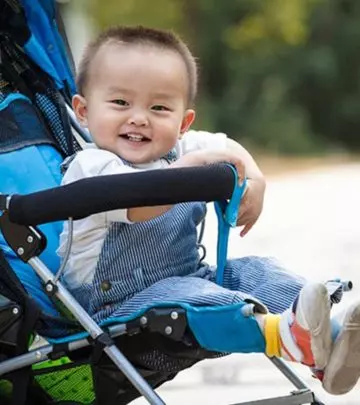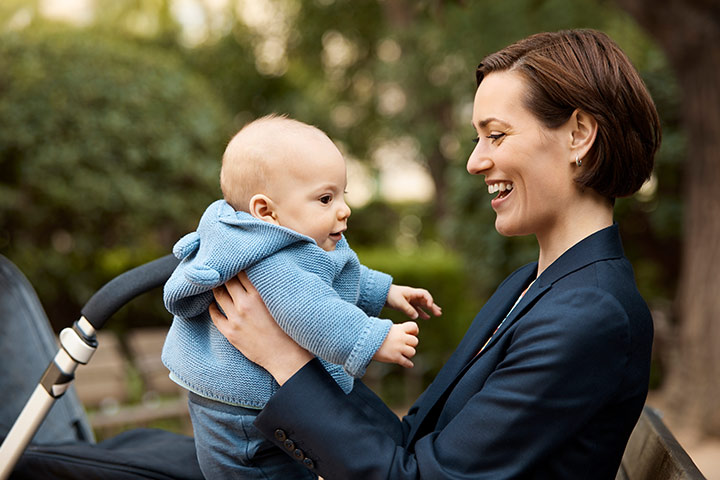
Image: istock
Have you ever wondered why babies always start smiling when they look at you? Be it your own baby, the neighbor’s or just that unknown one on the street, most of them just start grinning at you, for no rhyme or reason. Turns out, there is an explanation for this enchanting phenomenon, that too scientific. Babies are quite talented at flashing that adorable smile just at the right moment and there is a pretty awesome reason for the same.
Researchers at the University of California, San Diego, conducted a medical study in 2015 to determine the reason why and when the babies from the age of 4 to 17 weeks smile (1). The results revealed a fascinating reason for the same. Turns out, toddlers smile with an intention to bring a smile to their caregiver’s face. It further says that infants begin interacting in a goal-oriented manner with their mothers, after four months of age or so. They begin to grasp time and start understanding social interactions.
The study results will burst the bubble for all you mommies out there. Turns out, your infant can be a master manipulator. Usually, a mother tries to maximize the mutual smiling time as much as possible, which means that you would want your tiny tot to smile as much as you. However, a baby will attempt to maximize the time their mother spends smiling. So, in their own subtle way, your angel tries to ensure that he/she elicits more smiles from you in comparison to himself/herself (2).
How Exactly Do Your Tiny Tots Manage This?
How do these toddlers exactly maximize the time their mothers spend smiling? They use this concept called ‘maximally efficient wait times’ in between their smiles. These tiny masterminds have somehow figured out that if they do not smile at all, their caregivers won’t smile either. So, the little ones try to space out their smiles in such a manner that their mommies keep smiling throughout the day. Devious, but adorable, right?
But, what do these infants gain out of making their caregivers smile? Apparently, this is a method for them to learn about the emotions behind a smile. Maybe the little ones are just figuring out what joy is by sharing it with someone they are attached to the most.
The Little One’s Anticipatory Smile
It is only after the age of nine months that your baby smiles because he/she is feeling that joy within. Observe any baby of that age interacting with a stuffed teddy bear he/she loves, you will be able to notice how truly amused he/she is. There is a deeper meaning behind his/her smile even at this age. According to a study published in the science journal “Infant Behavior and Development” in 2009, if babies look out for their mother or any other animated partner while smiling at their stuffed toy, that phenomenon is referred to as an anticipatory smile (3).
These anticipatory smiles are considered to be an advanced social skill. At this time around, babies start becoming aware of the social world around them and is an important step in the development of an infant. Not only does your baby feel delighted looking at his/her stuffed teddy bear, but he/she also wants to share that joy with a third person – you! In the same study, researchers also found that if the baby starts with the anticipatory smile phenomenon at the age of nine months, he/she is more likely to feel more socially adjusted after growing up.
Isn’t it amazing how much your little one starts understanding, that too at such a tender age? Not only does your baby understand, but also makes an attempt to communicate with you. These tiny tots never seem to stop surprising everyone, don’t they?














